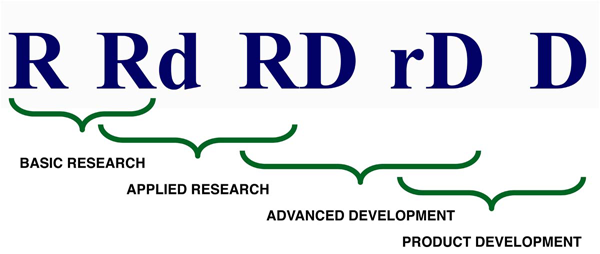With many more companies allocating a small part of their R&D budget to take on riskier projects, and the growth in corporate infrastructure to manage these riskier activities [Machine Design – July 17, 2014], the lines are starting to blur between two terms that historically were well differentiated. New products are now being launched out of “innovation organizations” and “advanced development organizations,” and not just product development organizations. As of now, research organizations are not yet launching products to market.
Due to a combination of the changing corporate approaches described above, the desires of developers to bring solution to markets and not just a piece of a solution, the globalization of R&D that has decentralized R&D, and naming conventions for product organizations that differ by country, one can no longer just pay attention to product development pipelines to stay abreast of what might be coming to market. The jury is still out as to whether today’s approaches will prove more productive than historical approaches that restricted the scope of projects to reduce uncertainty and improve forecastability of key enabling features and technologies – and then turned these enablers over to product development.
Research and development is a continuum, and highly analog rather than digital in construct (Figure 1). Historically, R&D could generally be segmented into four categories: Basic Research, Applied Research, Advanced Development, and Product Development. “Skunk Works” is perhaps a fifth category, a discussion for another day.
Figure 1
The Continuum™ of Research and Development

What’s The Difference Between Research and Development? [Machine Design – October 9, 2014] discusses historical approaches and the evolving corporate practices taking place today.
Note: The URL for the October 9 Machine Design issue will not be active for a few more weeks, but the article is posted.
![Goldense Group, Inc. [GGI] Logo](https://goldensegroupinc.com/blog/tangible-innovation/wp-content/uploads/2022/03/logo-corp-darkBlue-65x65.png)